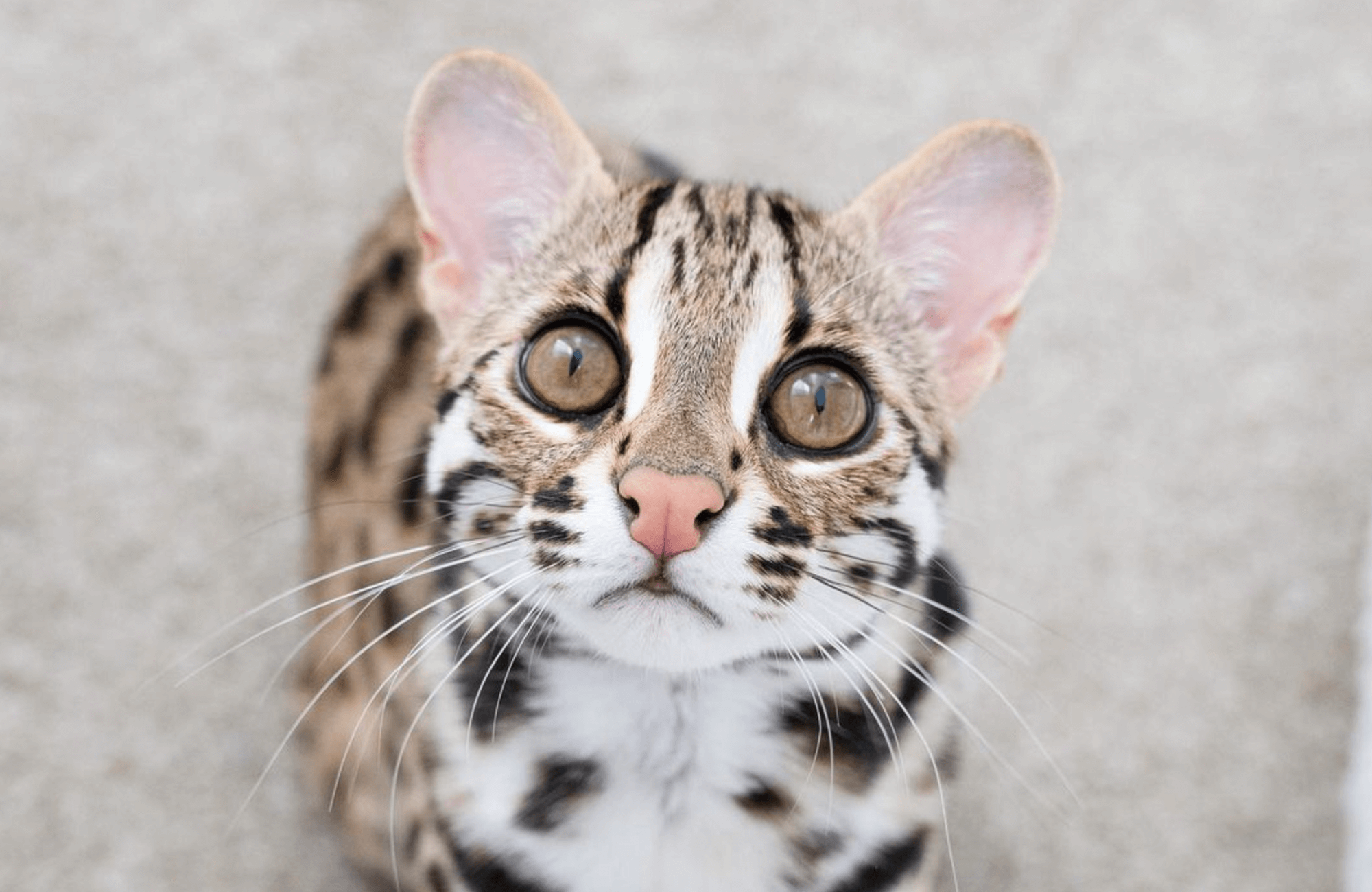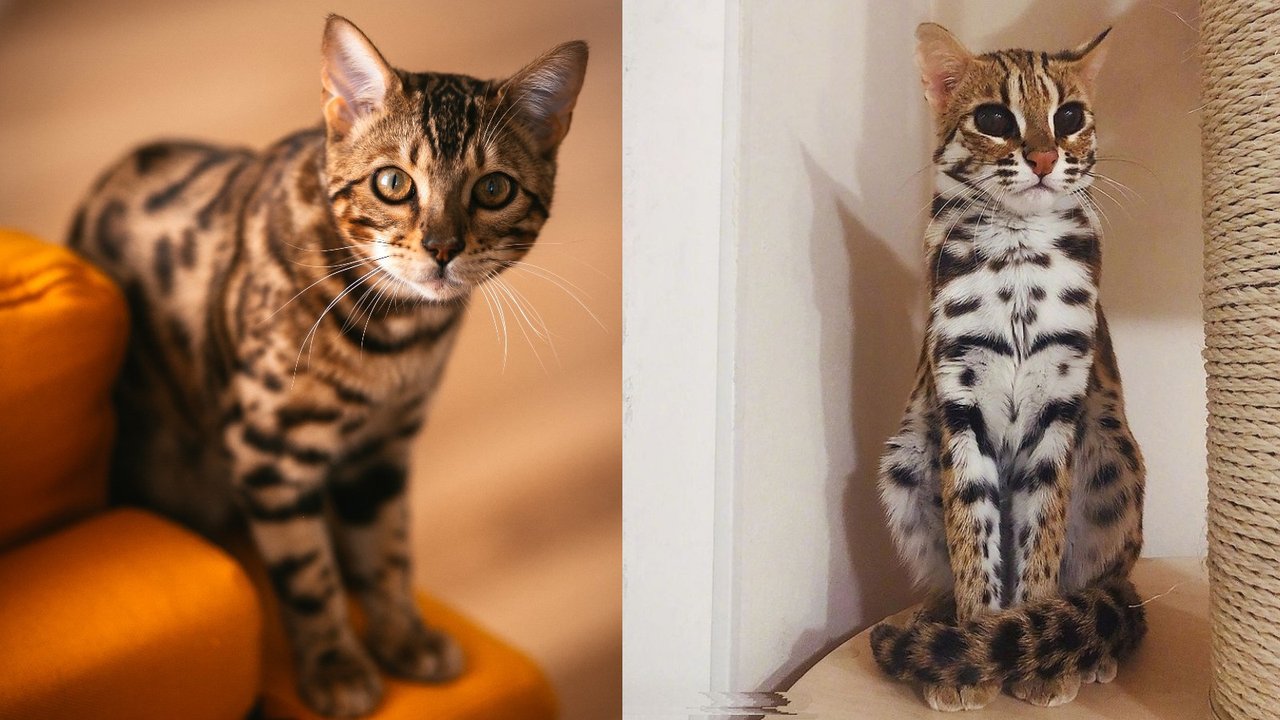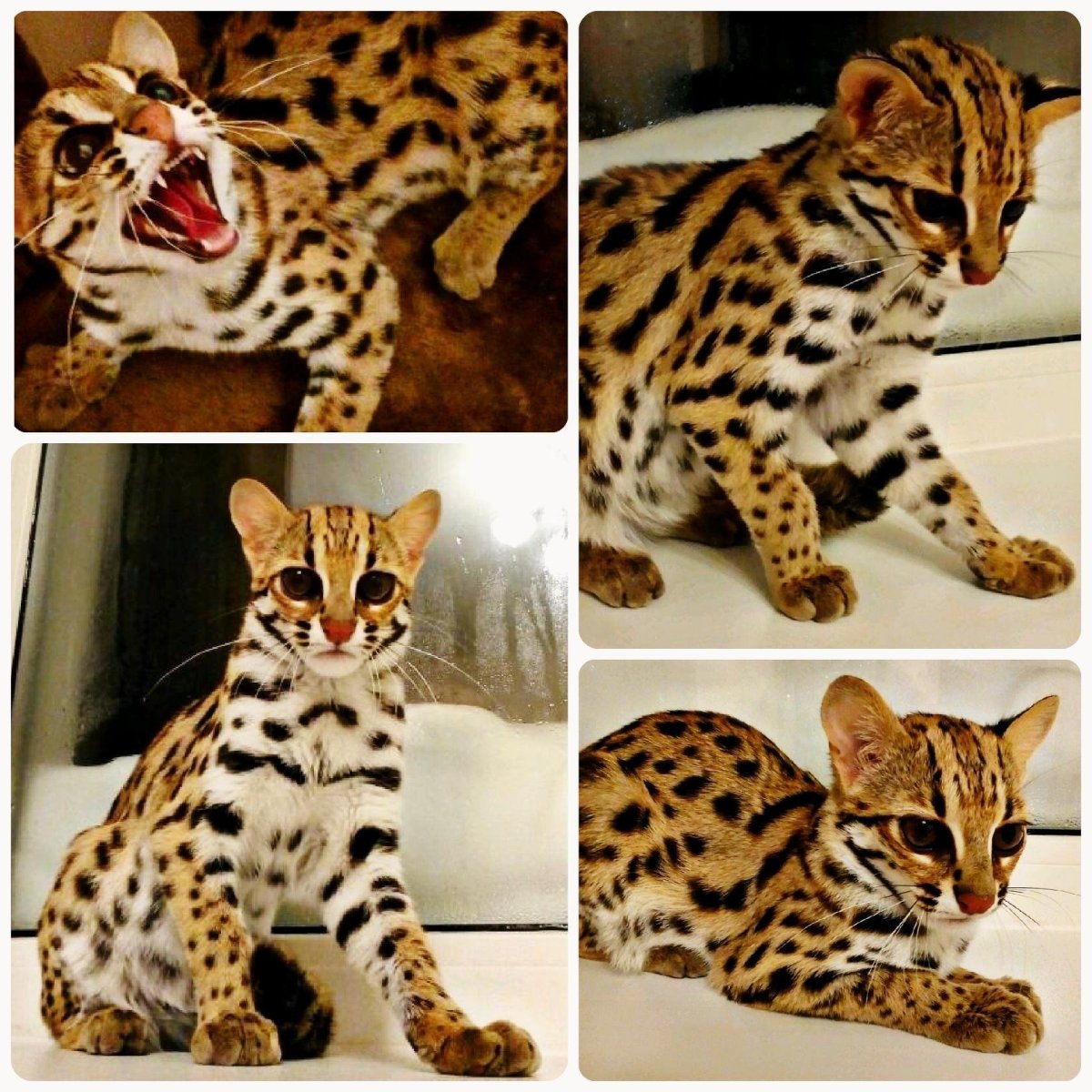Those acquainted with bengal cats are likely to have some knowledge about the Asian leopard cat as well, as it happens to be the untamed predecessor of the domesticated bengal. With its origins in Asia, this petite wild feline roams the land.

Although there are individuals who choose to keep the Asian leopard cat as a companion, it should be acknowledged that this feline is fundamentally untamed. Consequently, taming this cat species proves to be a challenging task, accompanied by numerous legal constraints imposed on its ownership.

How Large is the Asian Leopard Cat?
The Asian leopard cat is slightly bigger than the average domestic cat, boasting well-developed hind legs and a muscular body.
The size of the Asian leopard cat can vary greatly depending on the specific region it inhabits, given that there are more than 20 known subspecies spanning across the whole of Asia.
In Southeast Asia, the Asian leopards (P. bengalensis) are notably smaller, with adults rarely exceeding a weight of 10 pounds.
Comparing them to bengal cats, Asian leopards in Southern Asia weigh less but are considerably longer in length.
On the other hand, Asian leopard cats in Northern Asia (P. euptilura) share similar weight proportions to bengals, but they surpass them by almost 10 inches in length.
Here’s a breakdown of the size variations of Asian leopard cats by region:

What is the Average Lifespan of Asian Leopard Cats?
Typically, Asian leopard cats have a natural lifespan of about 8 to 12 years. However, when they are kept in captivity, their lifespan tends to be slightly longer, ranging from 10 to 13 years. It is worth noting that the lifespan of these wild cats is generally shorter than that of domestic cats, as domesticated felines often live a few years longer than their wild counterparts. For instance, Bengal cats, a breed that has Asian leopard cats in their lineage, typically live for about 12 to 16 years, granting them an additional 4 years of lifespan on average.

What is the Price of an Asian Leopard Cat?
The cost of an Asian leopard cat can vary depending on various factors such as location, age, breed, and gender. On average, the price range for these exotic cats can range from a few thousand dollars to tens of thousands of dollars. However, it is important to note that the purchase price is not the only expense associated with owning an Asian leopard cat. These cats have specific needs and require specialized care, which can result in additional costs for food, veterinary care, and environmental enrichment. It is crucial to consider both the financial and ethical aspects before deciding to bring an Asian leopard cat into your home.

In states where it is legal to purchase an Asian leopard cat, the cost of these feline beauties ranges from $4,000 to $15,000, depending on the region and the cat’s gender. These exquisite creatures are not as common as bengals and are more challenging to breed, which explains their higher price tag.
While bengal cats and savannah cats are often considered more suitable as pets, Asian leopards are not well adapted to a typical domestic cat lifestyle. Therefore, if you are looking for a feline companion, it may be better to explore other options.
When it comes to their conservation status, Asian leopard cats are currently classified as “least concern” by CITES (Convention on International Trade in Endangered Species of Wild Flora and Fauna). However, there are various threats that pose risks to the species as a whole.
Deforestation, hunting, habitat loss due to urbanization, the commercial trade of their fur, road accidents, diseases, tourism, and a decrease in genetic diversity are the primary threats faced by Asian leopard cats. These factors increase their vulnerability to new diseases and place their population at risk.
As for their dietary preferences, Asian leopard cats have a varied menu. They consume a range of foods, including birds, small mammals, reptiles, and even insects. Their flexible diet ensures they can adapt to different environments and find sustenance in the wild.

The Asian leopard cat usually feeds on a variety of small creatures such as rodents, lizards, amphibians, and birds as part of its regular diet.
Mice and rats are the primary food choices for the Asian leopard, but they may also consume other foods like eggs, fish, grass, chickens, and insects, depending on the environment they live in.
Where can we typically find the Asian leopard cat in its natural habitat?

The Asian leopard cat is a native species to Asia, and it is widely distributed throughout the continent, particularly in regions such as Korea, Taiwan, and China.

Check out this fantastic infographic created by Bengal Cats Co, designed by Laurent Jaccard. This visually appealing infographic provides detailed information on the Asian Leopard, covering its size, markings, and natural habitats.

The Asian leopard’s habitat can vary greatly, encompassing diverse environments such as rainforests, coastal regions, and valleys, which largely depend on the particular subspecies of leopard cat present.

The Asian leopard, specifically the two subspecies known as P. b. euptilura and P. b. bengalensis, can be found in various regions in Asia. P. bengalensis is primarily found in South and East Asia, while P. euptilura can be seen in countries like Russia, Korea, Manchuria, and Taiwan. In total, the Asian leopard cat inhabits 21 different countries in Asia. Although there has been a decline in hunting and commercial trade of the Asian leopard in recent years, the overall population stability of this species remains uncertain.

This stands out as one of the numerous reasons why it holds immense significance to purchase Bengal cats exclusively from well-informed and principled breeders who possess the proficiency to adequately nurture wild and hybrid felines.

Despite being similar in size to a domestic house cat, the Asian leopard possesses the same fierce demeanor as a tiger, giving rise to the creation of one of the most delightful and lively feline breeds known as the bengal.
